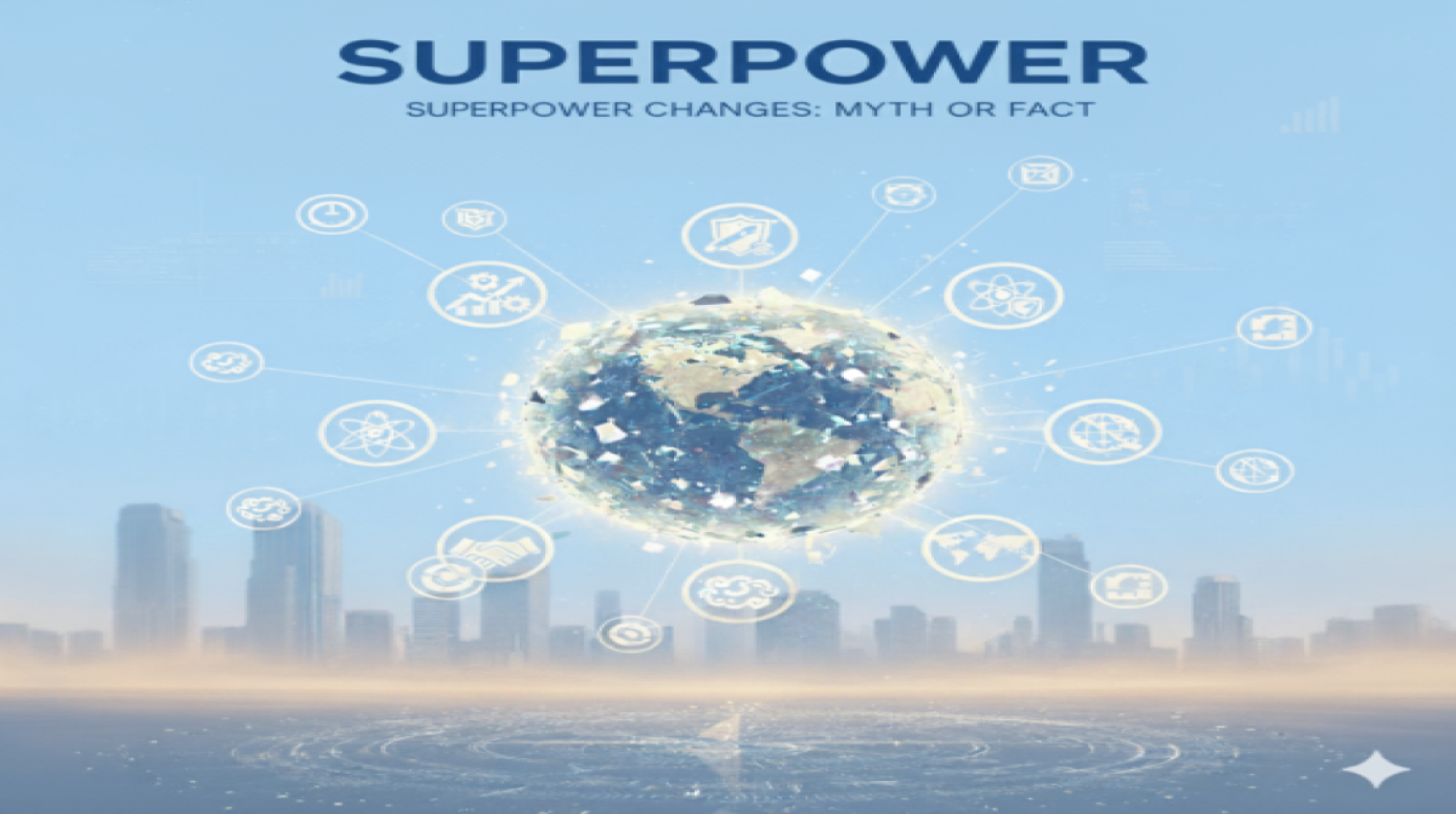Every decade brings confident predictions about which nation will emerge as the world’s next “Superpower”, yet history reveals these forecasts as remarkably unreliable.
Forecasting global power transitions captivates analysts, policymakers, and business leaders because it promises to unlock future strategic advantages. Government reports, consulting firms, and international organizations regularly publish analyses attempting to identify emerging superpowers, driven by the belief that understanding power shifts can inform critical investment and policy decisions.
From Japan’s anticipated dominance in the 1980s to China’s projected ascendancy in the 2000s, and now speculation about tech companies governing the world, the pattern remains consistent: superpower transitions are far rarer and more complex than experts predict.
Superpower is a state whose comprehensive power—measured as a weighted combination of economic capability, military capability, resilience, future resources, economic relationships, defence networks, diplomatic influence, and cultural influence—enables it to direct or influence the behaviour of other states and non‑state actors and to shape the course of international events across regions. Lowy Institute identifies eight factors in support of super power as follows to bring a country under the label of Superpower.
- Economic capability: Core economic strength with geopolitical relevance, including size (GDP, PPP), international financial/legal leverage, technological sophistication, and global connectivity.
- Military capability: Conventional military strength and signature capabilities, reflected in defence spending, force size/readiness, platforms, asymmetric advantages (e.g., missiles, cyber, ISR), and sustained forward posture.
- Resilience: Capacity to deter and withstand external shocks, captured by internal institutional stability, resource security, geoeconomic security, geopolitical security, and nuclear deterrence.
- Future resources: Forward-looking economic, defines, and demographic endowments shaping expected power (e.g., GDP and defence resources in 2035; working-age population in 2050).
- Economic relationships: Ability to exercise leverage through interdependence—trade relations, investment ties, and economic diplomacy (FTAs, outward assistance).
- Defence networks: Alliances, defines diplomacy, and arms-transfer partnerships that multiply autonomous military capability.
- Diplomatic influence: Diplomatic network reach, multilateral participation and clout, and effective foreign policy execution and strategic ambition.
- Cultural influence: Capacity to shape international public opinion via cultural projection, information flows, and people-to-people exchanges.
Historical analysis confirms that no nation achieves superpower status through excellence in a single dimension. True superpowers must demonstrate comprehensive capabilities across all eight dimensions, making superpower transitions exceptionally rare and difficult to predict.
Even though, major consulting firms project significant influence for technology companies, these entities lack the comprehensive capabilities required for governance. Tech firms cannot provide military security, democratic legitimacy, or territorial administration that define state power.
According to National Intelligence of the U.S. Intelligence, the future global governance will likely involve complex interactions between states, corporations, and international institutions rather than traditional superpower dominance. This hybrid model reflects the growing complexity of global challenges that require multi-actor solutions. Strategic forecasting reports project continued power diffusion rather than emergence of new superpowers. The National Intelligence Council’s Global Trends 2040 anticipates a multipolar world with multiple centers of power rather than hegemonic dominance. Morgan Stanley analysis suggests that multipolarity will drive supply chain diversification and technological competition without creating clear superpower successors.
Forecasts Rarely Match Reality
The persistent failure of superpower predictions stems from fundamental analytical flaws. Historical analysis reveals that single-factor extrapolations—whether based on economic growth rates, military spending, or technological advancement—consistently underestimate the multidimensional nature of true superpower status. The complexity of maintaining power across economic, military, technological, cultural, institutional, and legitimacy dimensions creates far more constraints than most forecasts acknowledge. Rather than seeking the “next superpower,” analysts and policymakers should prepare for a more complex, multipolar world characterized by diffused power and hybrid governance arrangements.
Top 10 Potential Superpower Countries according to lowy-institute-2023
Here is the list, and while reviewing the list it is good to keep in mind the eight factors as described in the beginning and conclude accordingly. One can find that the bottom four is nowhere near to such metrics, and in the top 4 list other than the US rest of the countries will have its own baggage in terms of cultural, diplomatic onward factors.
DART Consulting provides business consulting through its network of Independent Consultants. Our services include preparing business plans, market research, and providing business advisory services. More details at https://www.dartconsulting.co.in/dart-consultants.html



